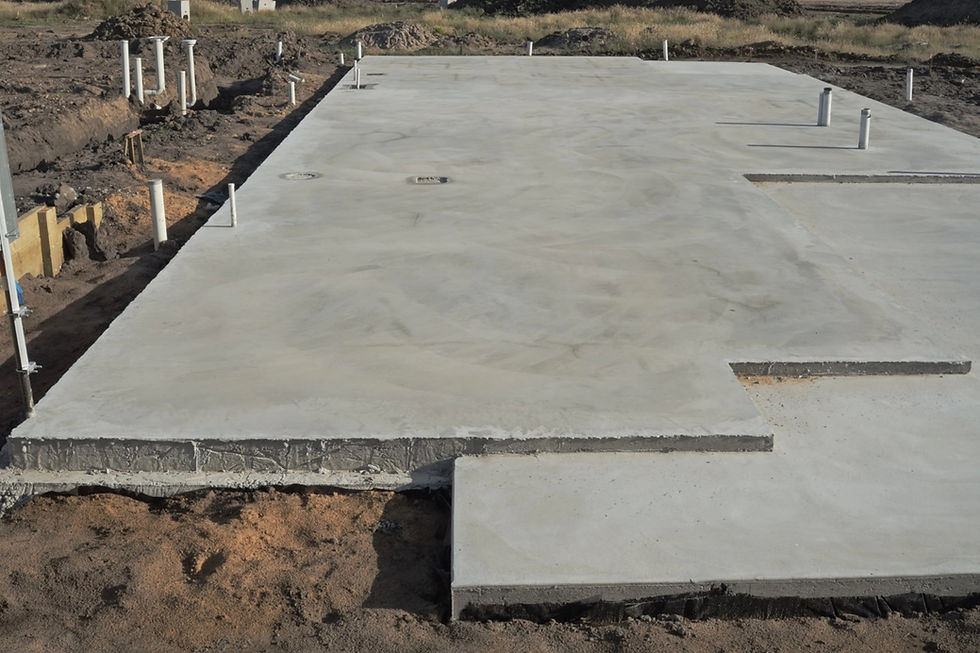What is Concrete Flatwork?
- _
- Jul 21
- 2 min read

Concrete flatwork refers to the process of pouring and finishing concrete surfaces that are flat and level. This technique is essential for creating durable and functional surfaces in a variety of settings, including residential, commercial, and industrial environments. Whether you’re looking to install a driveway, patio, sidewalk, or floor slab, understanding concrete flatwork can help you make informed decisions for your project.
Benefits of Concrete Flatwork
Concrete flatwork presents numerous advantages for residential, commercial, and industrial property owners in:
Durability: Thanks to its exceptional strength and durability, concrete is an ideal choice for areas with heavy foot or vehicle traffic.
Low Maintenance: Once installed, concrete surfaces require minimal upkeep compared to other materials.
Versatility: Concrete can be coloured, stamped, or stained to achieve various aesthetic effects.
Cost-Effective: While the initial investment may be higher, the lifespan and durability of concrete make it a cost-effective choice over time.
Weather Resistance: Properly installed concrete can withstand harsh weather conditions, making it suitable for various climates.
Uses of Concrete Flatwork for Residential, Commercial, and Industrial Properties
Concrete flatwork is commonly used in residential, commercial, and industrial settings. In residential projects, it is commonly used for driveways and patios, which not only enhance property value but also improve curb appeal. Commercially, concrete flatwork is essential for creating sidewalks and parking lots, ensuring easy and safe access for customers. In industrial environments, concrete flatwork is used to create heavy-duty flooring capable of supporting the weight and movement of large machinery.
How to Install Concrete Flatwork
Installing concrete flatwork involves several steps:
Site Preparation: Clear the area of any debris, vegetation, and topsoil.
Formwork: Set up forms to define the shape and size of the concrete surface.
Base Layer: Add a base layer of gravel or sand for drainage and stability.
Pouring Concrete: Mix and pour the concrete into the forms, ensuring even distribution.
Finishing: Use tools to level, smooth, and texture the surface as desired.
Curing: In order to obtain a highly durable concrete surface, the final step is to let it cure thoroughly.
Common Problems & Solutions
Although concrete flatwork is known for its durability, it is still susceptible to several common issues. Cracking often results from improper curing or soil settling, but this can be minimized by incorporating control joints to manage stress distribution. Spalling, or surface flaking, typically occurs due to freeze-thaw cycles; using a high-quality concrete mix and applying sealers can help prevent it. Uneven surfaces may also develop due to poor installation practices, and addressing these issues may require routine maintenance and timely repairs.
Choose Prep-Tek Concrete Services for Your Concrete Flatwork Needs
If you’re looking for reliable concrete flatwork services in Grande Prairie, look no further than Prep-Tek Concrete Services. Drawing on years of expertise, we specialize in delivering high-quality installations designed around your specific needs. Whether you’re undertaking a residential, commercial, or industrial project, we have the expertise to ensure your concrete flatwork is durable and aesthetically pleasing. Contact us today to learn more.
